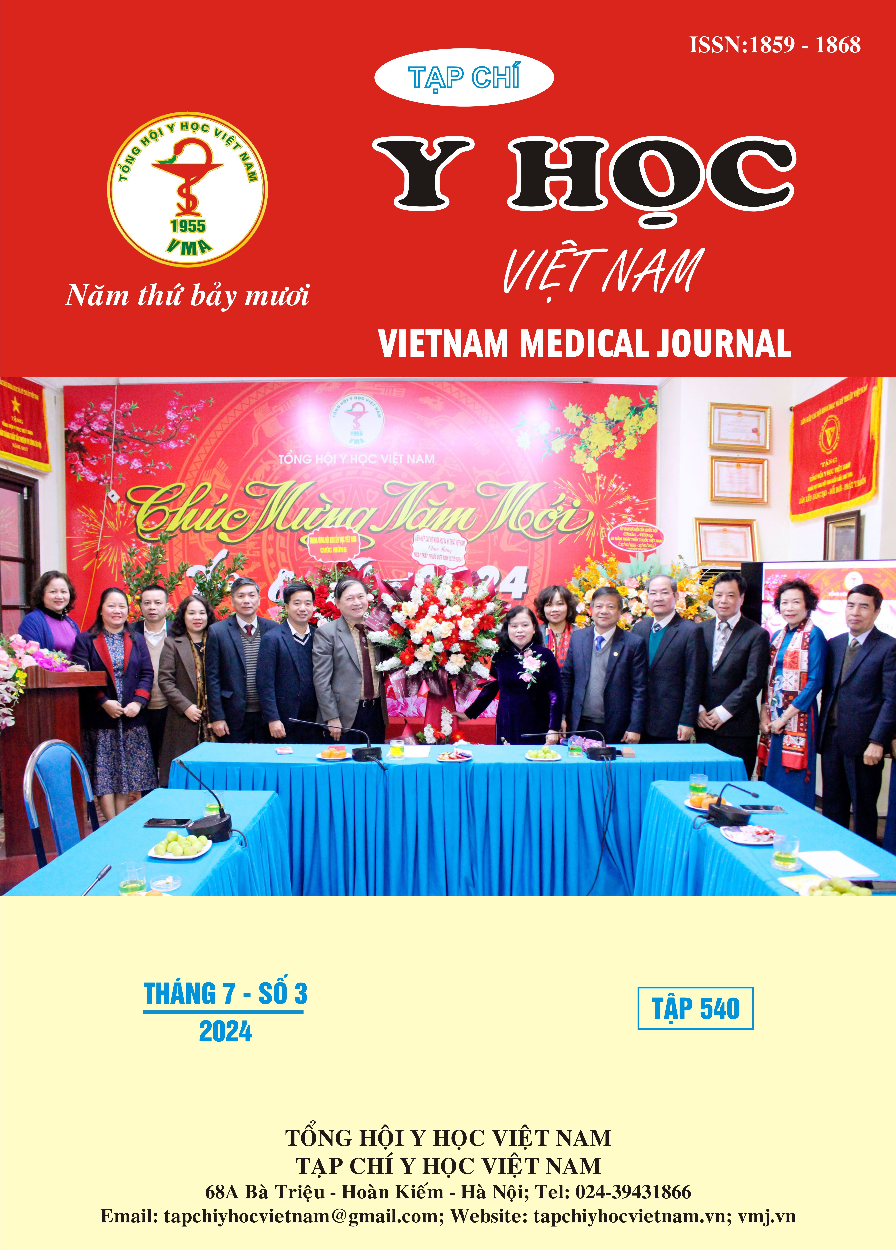STUDY ON RISK FACTORS OF NUTRITIONAL AND PRECOCIOUS PUBERTY IN CHILDREN
Main Article Content
Abstract
Objective: Among 174 children examined for puberty problems at Saint Paul General Hospital, There were 43 children diagnosed with precocious puberty and 131 children of the same age and sex who had not yet had puberty were the control group. Method: Using a case-control study method to identify related factors. Results: The most common age of diagnosis for precocious puberty (PP) is 7-8 years old, accounting for 62.8%. The percentage of girls with PP is 95.4%, while boys account for 4.6%. Exclusive breastfeeding is associated with a lower risk of PP. Overweight and obese children have a 0.61 times likelihood of developing PP. children who frequently consume milk and dairy products, and those with the habit of eating sweets before bed, have risks of early puberty of 0.66, 0.41, and 1.87 times, respectively. Children who consume fast food have a 0.18 times risk of developing early puberty compared to those without this habit. Children with PP due to being overweight and obese constitute 38,7% and 10,8%, respectively. Conclusion: Nutrition and eating habits are related to early puberty in children. It is recommended that parents actively prevent risk factors and detect early signs to seek medical consultation, which can help prevent early puberty in children.
Article Details
Keywords
: overweight, obesity, BMI, precocious puberty.
References
2. Carel JC, Leger J. 2008. Precocious Puberty. N. Eng J. Med. 358 . 22. 2366-23-77.
3. Liu Y, Yu T, Li X, et al (2021). Prevalence of precocious puberty among chinese children: a school population-based study. Endocrine. 72(2): 573-81
4. Valsamakis G, Arapaki A, Balafoutas D, et al (2021). Diet-Induced Hypothalamic inflammation, Phoenixin, and subsequent precocious Puberty. Nutrients. 13(10); 3460.
5. Nguyễn Phú Đạt (2002), “Nghiên cứu về tuổi dậy thì của trẻ em và một số yếu tố ảnh hưởng ở một số tỉnh Miền Bắc Việt nam”, Luận án tiến sỹ y học, Đại học Y Hà Nội. Knific T, Lazarevič M, Žibert J, et al (2022). Final adult height in children with central precocious puberty - a retrospective study[J]. Front Endocrinol (Lausanne). 2(13): 100-4
6. Pinheiro SL, Maciel J, Cavaco D, et al (2023). Precocious and accelerated puberty in children with neurofibromatosis type 1: results from a close follow-up of a cohort of 45 patients. Horm (Athens). 22(1): 79-85.
7. Wenyan. L, Qin.L, Xu D, Yiwen C et al. (2017) Association between Obesity and Puberty timing: A systematic review and Meta –anlysis. Int J Environ Res Public Healthy. 14: 1226
8. Min J.K, Yeon.J.O et al (2018) The usefulness of circulating levels of leptin, kisspeptin, and neurokinin B obese girls with precocious puberty. Gynecological Endo. Vol 34, NO 7, 627- 630
9. Massart F, Saggese G (2010) Oestrogenic mycotoxin exposures and precocious pubertal development. International Journal of Andrology. 33.369-376


